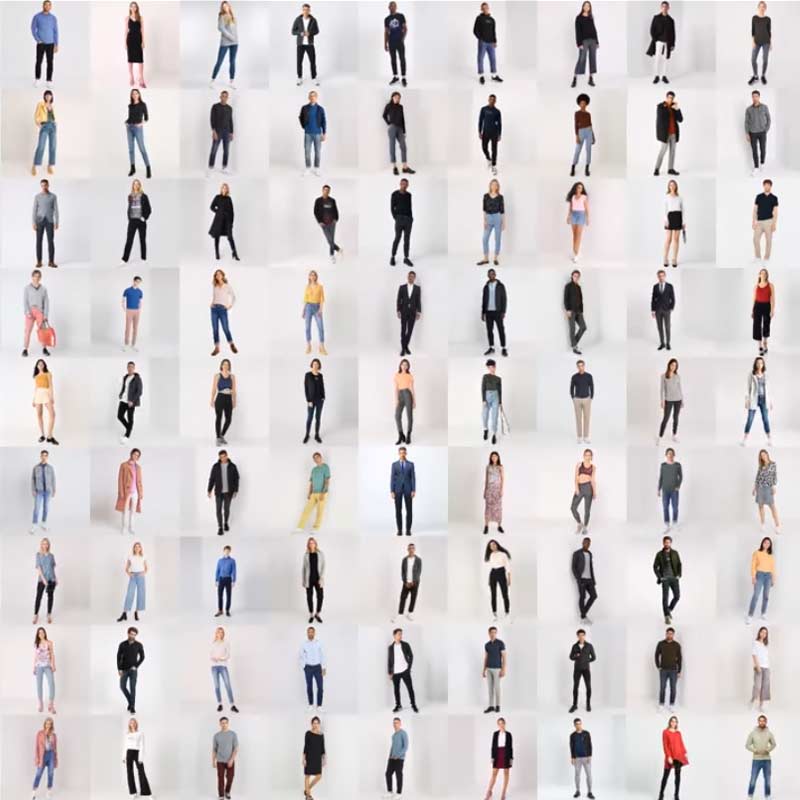
Even without eyes and ears (sensors), computers with AI can "see" and "hear" the world we live in.
The world has seen numerous AIs. For example, there is an AI capable of generating nude arts, an AI capable of creating art exhibits, an AI creating glitch-art videos, imaginary people and even realistic portraits, the notorious AI that creates deepfakes, an AI capable of creating convincing fake faces and more.
And here, a Kyoto-based firm DataGrid is taking things a step further by creating an AI capable of generating fake but complete human bodies from head to toe, all from scratch.
What makes it astonishing is that, the imagery of the people are photorealistic - complete with their imaginary faces, hair, outfits, and all.
According to the company, the models the AI generates aren't real people, meaning that they don't exist.
What this means, each and every model generated by the AI, is created by by DataGrid’s neural network.
In a video showing off the technology, DataGrid shows how the AI can generate realistic poses, model after model, as their outfits transform from bomber jackets to winter coats, dresses and more.
DataGrid presented this demo without many details, but noted that the technology could be useful in creating virtual models for advertising and displaying apparel.
If it’s widely adopted, it could reduce the need for brands, advertising agencies and online stores to invest in photo shoots to showcase their products. They won't have to deal with probably the tedious attempt of searching for photogenic models, for example, or investing in a studio with proper lighting or a catering budget.
DataGrid has previously developed an AI capable of creating images resembling Japanese celebrities using what is known as generative adversarial network (GAN).
Developed back in 2014, the technique involves pitting two intelligent agents against each other, with one trying to fool the other.
Past attempts to create photorealistic portraits with GANs focused just on generating mostly faces.
While they can be astonishingly good, some of the faces can have flaws, like for example, asymmetrical ears or jewelry, bizarre teeth, and blotches of colors.
But here, DataGrid’s system trained its AI by data of nondescript white background, with the subject (model) being shined with light. This way, the contrast enables the AI to better distinguish what's what, and has less data to learn, preventing extraneous unnecessary information from confusing the algorithms.
As more researchers are capable of creating a new algorithm that can generate realistic images that are indistinguishable from real photos, this highlights even more concerns about the future. This algorithm or similar could be misused to undermine public trust in digital media, because AI-generated media could be readily misused in much easier ways to create manipulative propaganda.
And in DataGrid AI's case, it can also translate to lesser demands for photo models.
